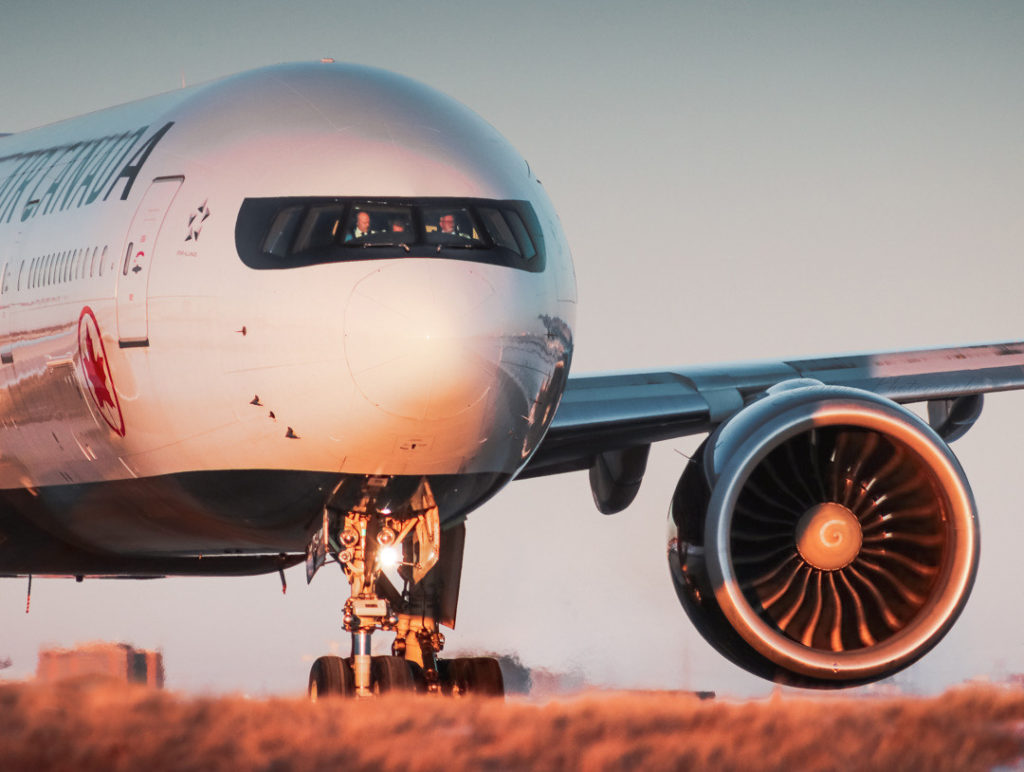Estimated reading time 7 minutes, 42 seconds.
Sustainable aviation fuel (SAF), a renewable alternative to traditional jet fuel, is playing an increasingly important role in efforts by the airline industry to decarbonize. However, turbulence is forecast for the “green” aspirations.
The International Air Transport Association (IATA), a group that represents global carriers such as Air Canada and WestJet, maintains that achieving net-zero emissions of carbon dioxide by 2050 remains a strategic goal for the industry. Despite recent progress in decarbonization plans, SAF recently accounted for only 0.01 percent of jet fuel consumption globally, according to IATA.
Sebastian Mikosz, IATA’s senior vice president of environment and sustainability, said in a June statement that industry and government officials must work cooperatively to boost SAF production, availability, and uptake.

“Hydrogen and/or electric propulsion systems will most likely be available for short-haul commercial flights by 2035, but the majority of emissions come from long-haul widebody flights,” said Mikosz. “To tackle these emissions, SAF is the only proven solution.”
SAF is still in its infancy, but is making gradual strides. In April, renewable fuel company Aemetis Inc. of California announced a 10-year deal to supply JetBlue with blended SAF. That contract is valued at US$530 million.
In the short term, the airline industry faces complex challenges with travel snarls after the easing this year of Covid-19 pandemic restrictions. Longer term, SAF is expected to become an increasingly important consideration, given that companies are pledging to improve environmental, social, and governance (ESG) issues.
Robert Kokonis, president of airline consulting firm AirTrav Inc., said ESG mandates could influence demand for flights, especially long-haul premium trips. “The onus is going to be on the heads of individual budget centers and departments determining how much to travel,” he said in an interview.
With consumers watching their budgets carefully during inflationary times, the impact of incorporating SAF into fuel programs will be closely monitored by airlines during this early stage for the alternative fuel.
“That’s one of the inhibitors — if SAF is too expensive and it’s going to impact the ticket prices, that will be problematic for the airline,” said Kokonis. “We need to drive down the unit costs per liter or per gallon of SAF, and we need to have a commercial scale of production.”
Earlier this year, Air Canada and WestJet announced flights with SAF. In April, as part of its program to reduce greenhouse gas (GHG) emissions such as carbon dioxide, Air Canada designated four separate commercial flights from San Francisco, arriving in Vancouver, Calgary, Toronto, and Montreal.
“SAF is the main avenue by which Air Canada and the aviation industry as a whole will reduce their GHG emissions, as the industry continues to develop other aircraft technologies such as electric, hybrid, or hydrogen aircraft at scale in a commercially meaningful way,” said Teresa Ehman, Air Canada’s senior director of environmental affairs, in a news release.
In June, WestJet participated in a collective purchase of SAF, with the fueling of a plane that flew a commercial route in a collaborative project with Boeing for a “symbolic flight” from Los Angeles to Calgary. WestJet is optimistic about SAF’s potential to eventually become widespread, instead of a niche product. Still, the Calgary-based carrier acknowledged that SAF is currently constrained by limited production and high production costs.
Management consulting firm Deloitte Canada said aviation is a hard industry to decarbonize.
“For nearly 15 years, producers in various parts of the world have been working on developing this more climate-friendly kind of fuel. There are pilot programs under way across Canada to accelerate early-stage SAF production capacity by using existing refineries for co-processing,” Deloitte said in its 36-page report titled “Reaching cruising altitude: A plan for scaling sustainable aviation fuel in Canada.”
Deloitte noted that both SAF and lower-carbon aviation fuel are readily deployable since they are compatible with existing aircraft and fueling infrastructure. But the firm’s report also acknowledges the hurdles in producing SAF from biogenic sources, including forestry waste, oil crops, and used cooking oil. SAF can also be produced synthetically, involving hydrogen and carbon-capture technology.
With production costs for SAF up to five times higher than that of conventional aviation fuel, Deloitte said incentives from government agencies and airport authorities in Canada will be required to accelerate the hoped-for transition.
“Canada has the unique advantage of diverse feedstocks and a mature energy sector, but its supply chains have not yet been demonstrated at commercial scale,” said Deloitte.
Canadian companies in SAF innovation include Montreal-based Enerkem, whose technology involves producing biofuel from feedstock such as municipal waste and forestry biomass.
SixRing, a subsidiary of Calgary-based Fluid Energy Group Ltd., is also working on innovations for supplying biofuel by using sustainable biomass such as forestry residue and plant-based waste.
In the Netherlands, KLM Royal Dutch Airlines said using SAF and renewing fleets with newer, fuel-efficient planes are effective ways to reduce emissions of carbon dioxide.
In May, KLM fueled a Boeing 787-10 Dreamliner with a blend of 39 percent SAF for a long-haul flight from Amsterdam to Edmonton. The flight was part of a sustainable flight challenge at the SkyTeam Airline Alliance, which is seeking to gain insights into fuel options.








